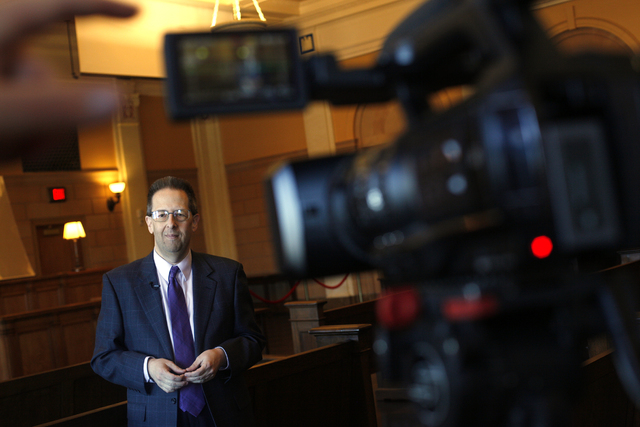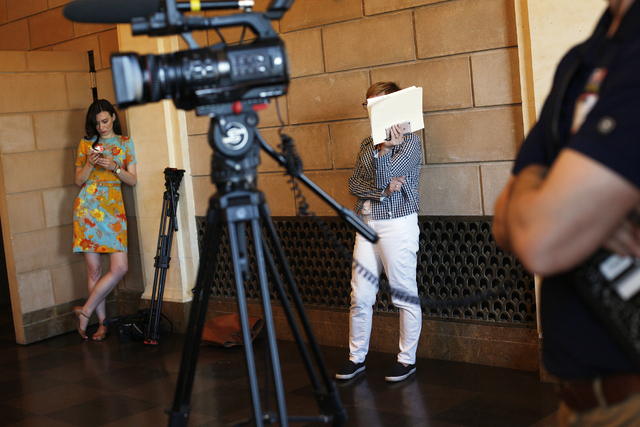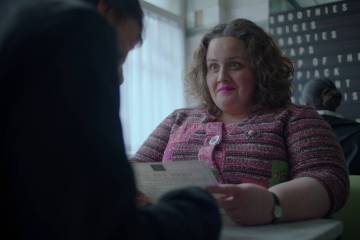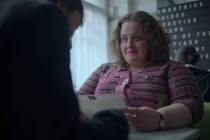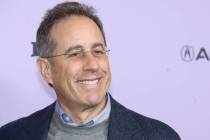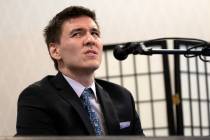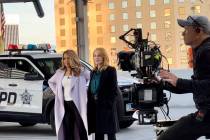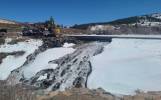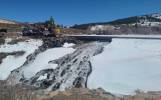C-Span offers its takes on Las Vegas history, literary scene
A documentary crew from C-SPAN, the nonprofit cable network devoted to politics, last month spent four days in Nevada, uncovering snippets of Las Vegas history and exploring corners of Southern Nevada’s literary landscape.
Their work will premiere this weekend on C-SPAN networks. Highlights on C-SPAN3 (which becomes American History TV on weekends) will include pieces about the Neon Museum and the National Atomic Testing Museum, an interview with Clark County museums administrator Mark Hall-Patton about early Nevada settlers, and examinations of gaming, Nevada politics and Hoover Dam’s impact on Las Vegas.
Highlights on C-SPAN2 (which becomes Book TV on weekends) will include a look at the Black Mountain Institute with author Hossein Mortezaeian Abkenar, a visit to The Writer’s Block bookstore in downtown Las Vegas, a feature about the book collection of philanthropist Beverly Rogers, and talks with authors Michael Green, Matthew O’Brien, Gregg Jones and Oscar Goodman.
In addition, the crew filmed an interview with Las Vegas Mayor Carolyn Goodman that is scheduled to air Friday on “Washington Journal,” C-SPAN’s signature program, says Ashley Hill, C-SPAN producer and community relations representative.
The visit to Las Vegas was part of what C-SPAN is calling its 2016 Cities Tour, through which the public affairs network’s video crews profile various American cities.
Unlike many Vegas-centric documentaries that seem to air perpetually on some of pay TV’s higher-numbered channels, the pieces viewers will see on C-SPAN channels this weekend all are new. For example, on one morning during their visit, Hill and Scott Hummelsheim, a C-SPAN producer and video journalist, interviewed Michael Green, an associate history professor at the University of Nevada, Las Vegas, at the Mob Museum in downtown Las Vegas.
Green is no stranger to being filmed for documentaries. Recapping the 1978 legal battle between Frank “Lefty” Rosenthal and Harry Reid, then chairman of the Nevada Gaming Commission — an incident that became the basis for a story line in the 1995 Martin Scorsese film “Casino,” which Green considers “great cinema (but) bad history” — Green is organized, witty and thorough.
Speaking to a camera and a film crew can be an odd form of communication, Green says. But, he jokes, “these folks don’t mind being here. Try freshmen.”
Hummelsheim calls Green’s on-camera performance “so far, excellent.”
Meaning, Green adds, “ ‘he probably will screw up later.’ ”
Hummelsheim says that, in filming experts for the Cities Tour, “we’ve done it a couple of ways. It just depends on the interviewee. Sometimes people are more comfortable with more question-and-answer interaction. Michael, I can ask him, ‘What are we looking at?’ and let him just go. Some people are able to just talk and talk, and let him go and you’ll get some good material.”
“He means I won’t shut up,” Green says, smiling.
Hill says C-SPAN’s two documentary units are made up of three people each. “We travel around the country and we embed ourselves in a city for a week at a time, working with our cable partners like Cox Communications in Las Vegas,” she says.
Initially, the series focused on “small to mid-sized cities,” Hill says, cities that “otherwise would not be featured on a national network. But, eventually, we expanded to larger cities. We recently were in Nashville, and here we are in Las Vegas.”
Hill says the programming filmed here is “sort of our way to introduce the rest of the country to parts of the city they don’t know well.”
“You may think you know Las Vegas, but you know about the shows and the entertainment. What do you know about Vegas history,” Hill says, or “the rich literary scene here?
“So we are very excited to show the rest of the country what makes Las Vegas special, and in a way they might not be familiar with.”
In planning the trip, a visit to the Mob Museum was a must, Hill says, because “you can’t tell me, ‘Las Vegas’ and not talk about that mob history. It’s truly fascinating.”
The crew also filmed at the Neon Museum, which Hill calls “one of my favorite places.”
“I love retro things,” she says, and “you see these pieces of art. Really, neon signs are art. They tell a story about early Vegas and how it grew to what it is now.
“And, of course, we look at the history of gambling. You can’t come to Las Vegas and not talk about that.”
“There’s just so much history here,” says Hill, who also considers filming at Hoover Dam one of the trip’s highlights.
“Now, of course, Hoover Dam is outside of Las Vegas, but what people might not know is, because of Hoover Dam, Las Vegas was able to weather the Great Depression,” she says. “It was this influx of people who came here to work on the dam, to build the dam, and it kept this city afloat. So we got to go in the bowels of the dam, so to speak, the part that is closed to the public.”
Then, Hill says, “the literary scene here in Las Vegas is fascinating.”
“My favorite place I stopped in downtown is The Writer’s Block. It’s an independent bookstore in downtown Las Vegas and a, slash, artificial bird sanctuary. There’s a wall lined with these artificial birds and you can adopt your own bird there.”
At the Black Mountain Institute at the University of Nevada, Las Vegas, the team filmed a piece about the organization’s City of Asylum program, which aids authors who have been censored, threatened or persecuted in their own countries and which, Hill says, “shows the power of the written word.”
Hill says the planning process for each city visit begins several weeks beforehand and involves choosing which features of a city to cover and which of many potential sources to interview.
Part of the research involves cold-calling potential sources, resulting in what Hill calls a “great human treasure hunt. You call one person and they know someone else. You find someone like Michael Green and he’ll tell you to call this other person.
“Then we have an editorial meeting where we (discuss) all of our ideas. And we can’t tell every historical story in a city. There are so many to tell. But we want to get the main highlights and also a couple of things that may be surprising to people as well.”
In addition to filming stories, the C-SPAN team does community outreach in each city it visits, including visiting schools to talk to students about C-SPAN, politics and government, Hill says. Here, the crew visited Knudson Middle School, where Hill spoke with sixth-grade video production students.
The crew even carved out a bit of time to play tourist. For instance, Hill admits that she might have “clapped way too loudly” while attending a performance of “Michael Jackson One.”
But, Hill says, “our enjoyment of the city and our appreciation of the city, and how we got to be fully immersed, staying on the Strip, that does come across in our programming.”
Read more from John Przybys at reviewjournal.com. Contact him at jprzybys@reviewjournal.com and follow @JJPrzybys on Twitter.








